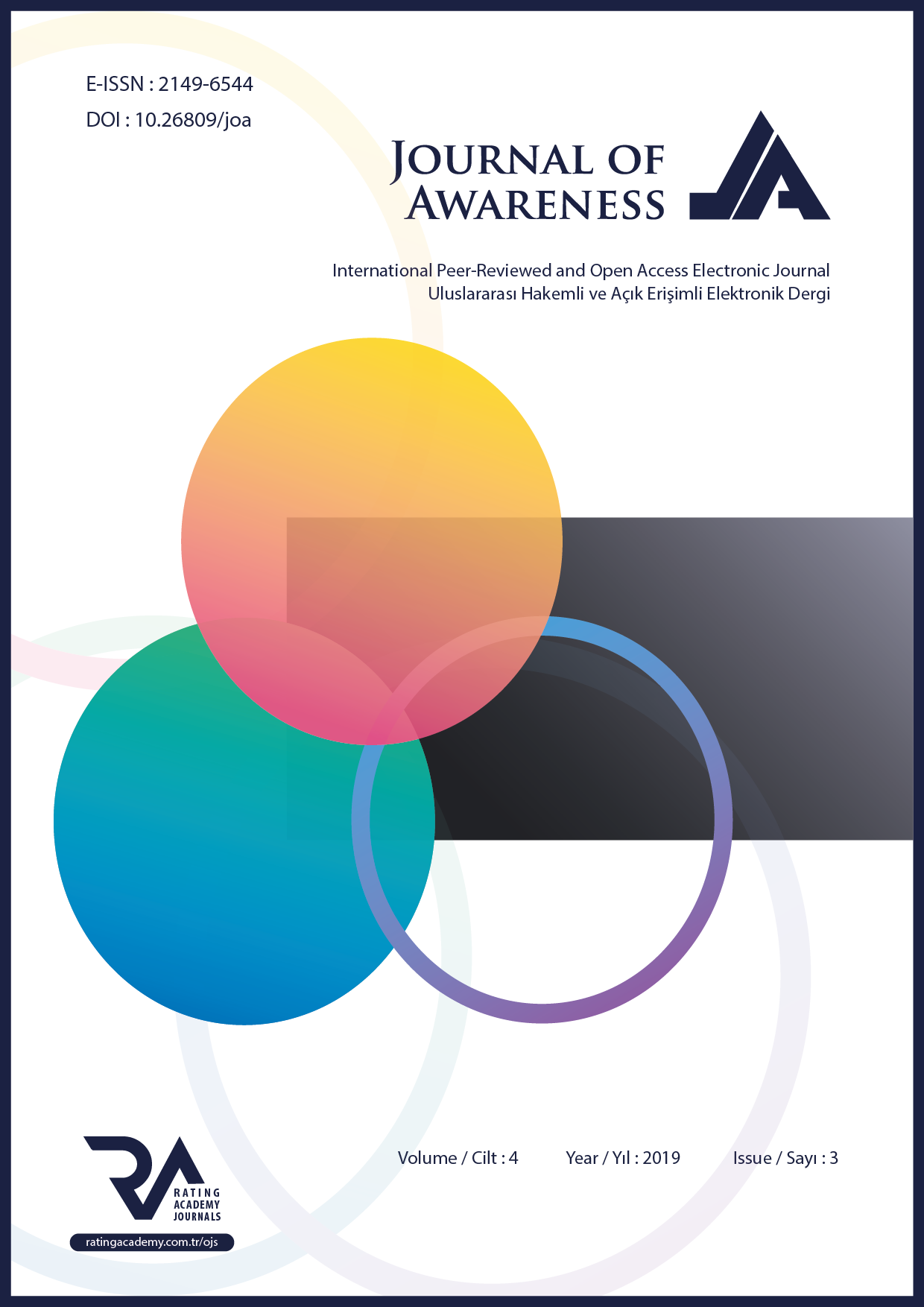A COMPARISON IN TERMS OF EDUCATIONAL GEOGRAPHY: BAKIRKÖY AND SULTANGAZİ DISTRICTS
DOI:
https://doi.org/10.26809/joa.4.023Keywords:
Education, Settlement, Population, Geography, Bakırköy, SultangaziAbstract
The most important resource for countries is the amount of population they have. But nowadays, the quality of the population is as important as the amount of population. The most important factor determining the quality of the population is the level of education. Trained manpower and educated individuals are the most important elements in developing of settlements, economic value productivity and social and cultural development. The development of societies which gives importance to education is faster. So in a residential area there is a close relationship between the education level of the population and the economic level. Due to insufficient importance given to education, economic and social development rate is low in less advanced and developing settlements. Educational geography, examines the educational status of the population in settlement areas and focuses on the causes and consequences of the results. The most basic data which reveals the educational status of settlements is the literate rate. However, nowadays, depending on the diversification of education, the literacy rate is insufficient to reveal the educational status of the settlements. Educational geography not only examines the literate status of the population but also examines the distribution of the population to education levels according to graduation status of the population.
Istanbul, Turkey’s most advanced city, has 39 districts. These districts’ levels of development are different. In this study, Bakirköy and Sultangazi districts, whose settlement history and socioeconomic levels are quite different from each other, were researched in terms of educational geography. Thus, the relationship between the educational and development levels of the settlements were tried to be determined.
Downloads
References
Bakırköy İlçe Milli Eğitim Müdürlüğü, 2019, http://bakirkoy.meb.gov.tr/ (Erişim Tarihi: 12.05.2019).
ÇORBACIOĞLU, N., 2007, Çivril İlçesinde Eğitim Coğrafya İlişkisi, Yüksek Lisans Tezi, Afyonkarahisar Kocatepe Üniversitesi Sosyal Bilimler Enstitüsü.
DOĞAN, M., 2009, Socio- Economic Structure of the Population in Yalova, Management and Education Academic Journal,Vol.5, No: 2, 76-84, Bulgaristan.
DOĞANAY, H., 2014, Türkiye Beşeri Coğrafyası, Pegem Akademi, Ankara.
IŞIK, E., 2013, Erzurum İlinin Eğitim Coğrafyası, Yüksek Lisans Tezi, Atatürk Üniversitesi Sosyal Bilimler Enstitüsü.
İSO, 2019, İstanbul Sanayi Odası 2019 Yılı Üye İstatistikleri, 10.05.2019 tarihinde e-posta yoluyla temin edilmiştir.
İTO, 2019, İstanbul Ticaret Odası, http://www.ito.org.tr/wps/portal (Erişim Tarihi: 17.05.2019).
İSTANBUL, 1994, Bakırköy, Dünden Bugüne İstanbul Ansiklopedisi, Cilt:1, 555-557, Kültür Bakanlığı ve Tarih Vakfı Ortak Yayını.
KARA, T., ATASOY, E., 2018, Eğitim Coğrafyası Perspektifinden Çanakkale İli, Atatürk Üniversitesi Sosyal Bilimler Enstitüsü Dergisi, 22(2), 1233-1257.
KAYA, F., 2016, Ağrı İlinin Eğitimi Coğrafyası, Ağrı Valiliği İl Kültür ve Turizm Müdürlüğü Yayınları No:14, Ağrı.
KODAY, S., 2005, Gümüşhane İlinin Eğitim Coğrafyası, Atatürk Üniversitesi Sosyal Bilimler Enstitüsü Dergisi, 5 (1), 45-56.
MEB, 2018, Milli Eğitim İstatistikleri Örgün Eğitim 2017/2018, Milli Eğitim Bakanlığı, Ankara.
Mebbis, (2019) https://mebbis.meb.gov.tr/KurumListesi.aspx (Erişim Tarihi 18.05.2019).
MUTLU, İ., 2017, Arazi Kullanımı – Ulaşım Etkileşiminin İrdelenmesi: Sultangazi Örneği, Yüksek Lisans Tezi, İstanbul Teknik Üniversitesi.
SERTKAYA DOĞAN, Ö., 2018, Beşeri ve Ekonomik Coğrafya, Pegem Akademi, Ankara.
Sultangazi İlçe Milli Eğitim Müdürlüğü, 2019, https://sultangazi.meb.gov.tr/ (Erişim Tarihi: 12.05.2019).
ŞAHİN, V., 2015, Tekirdağ’ın Eğitim Coğrafyası Üzerine Bir İnceleme, Doğu Coğrafya Dergisi, 20 (34), 43-60.
TÜMERTEKİN, E., ÖZGÜÇ, N., 2009, Beşeri Coğrafya; İnsan, Kültür ve Mekân, Çantay Kitabevi, İstanbul.
ÜNLÜ, M., & YILDIRIM, S., 2017, Coğrafya Dersi Öğretim Programına Bir Coğrafi Beceri Önerisi: Mekânsal Düşünme Becerisi, Marmara Coğrafya Dergisi, 35, 13-20.
Downloads
Published
How to Cite
Issue
Section
License
When the article is accepted for publication in the Journal of Awareness, authors transfer all copyright in the article to the Rating Academy Ar-Ge Yazılım Yayıncılık Eğitim Danışmanlık ve Organizasyon Ticaret Ltd. Şti.The authors reserve all proprietary right other than copyright, such as patent rights.
Everyone who is listed as an author in this article should have made a substantial, direct, intellectual contribution to the work and should take public responsibility for it.
This paper contains works that have not previously published or not under consideration for publication in other journals.











